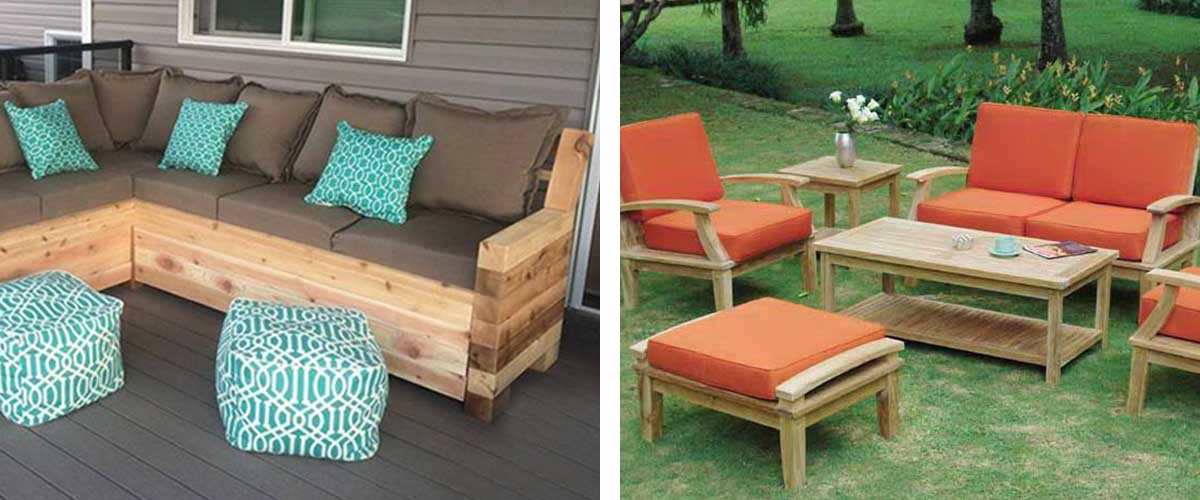Like inside your home, furniture is the finishing touch to creating the perfect outdoor living space. We all want to get out and enjoy the warm weather while it’s here, so having a comfortable area to relax is important. Seating clusters let your family and friends enjoy each other’s company while extending your home outdoors.
Your outdoor furniture should bring people together, stand up to the elements, and showcase personal style. Here are a few things you’ll need to consider before choosing your new furniture, followed by the pros and cons for the furniture materials:
How do you use the space?
Do you host more family bbq nights or grown-up cocktail parties? Do you prefer lounging in the sun with a good book or do the neighbourhood kids often use it for water-fights and dance parties?
What’s your style?
Do you prefer bright, tropical colours and cushy pillows or more muted, natural earth tones and cleaner lines?
How does the traffic flow?
Are you be able to walk through the space from the bbq to the kitchen without tripping? You love big comfy wicker pieces but how will they fit in your tiny patio space?
How durable does it need to be?
Are you looking for something that will last as long as the home or do you plan on replacing everything in a few years when the kids have moved out?
What is your budget?
Let’s face it, most of us have to adhere to a budget. Once you’ve established yours, there are plenty of creative options: maybe one big comfy statement piece paired with simple built-in benches and colourful cushions, or a matching set from the big box store.
Plastic
Plastic is often the cheapest option when it comes to outdoor furniture. Sold at most big box stores, it is very portable and usually stackable for easy storage.
Although it’s the least expensive option, plastic is also the least durable option for outdoor furniture. It can fade when left out in the sun and break or crack easily.
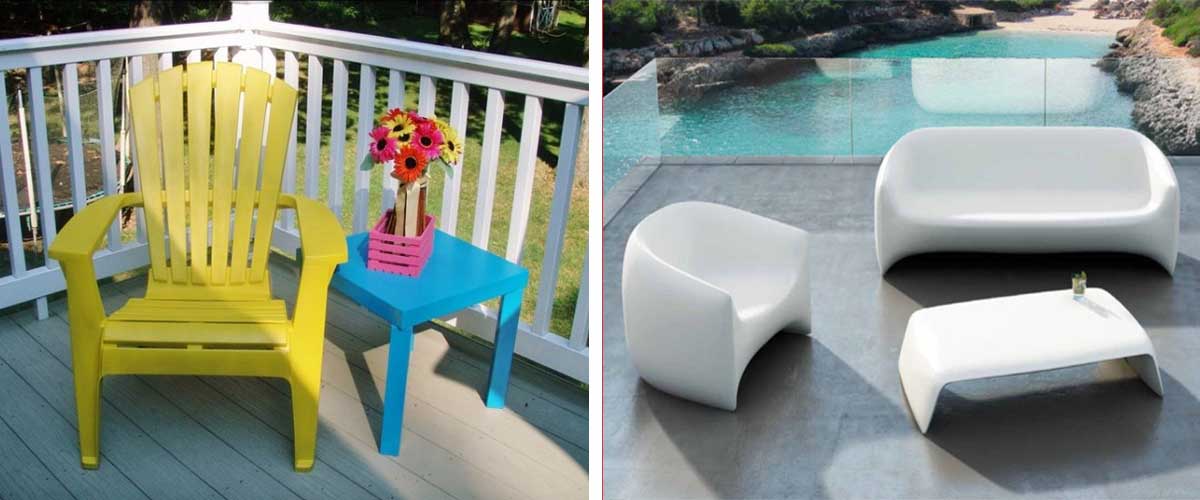
Aluminum
Aluminum is a great option for many areas of the country. Its powder-coat finish is extremely durable and doesn’t rust or fade, making it perfect for salty or wet locations like Halifax. This light weight material is easy to move around and easy to clean with just soapy water. Because it is so malleable, aluminum outdoor furniture tends to come in a wide variety of styles.
Aluminum’s light weight is both a pro and a con of the material. High winds can move the furniture around so it’s good to protect it by placing it inside when bad weather is expected. Additionally, aluminum does hold heat and can be hot to sit on when left out in the sun.
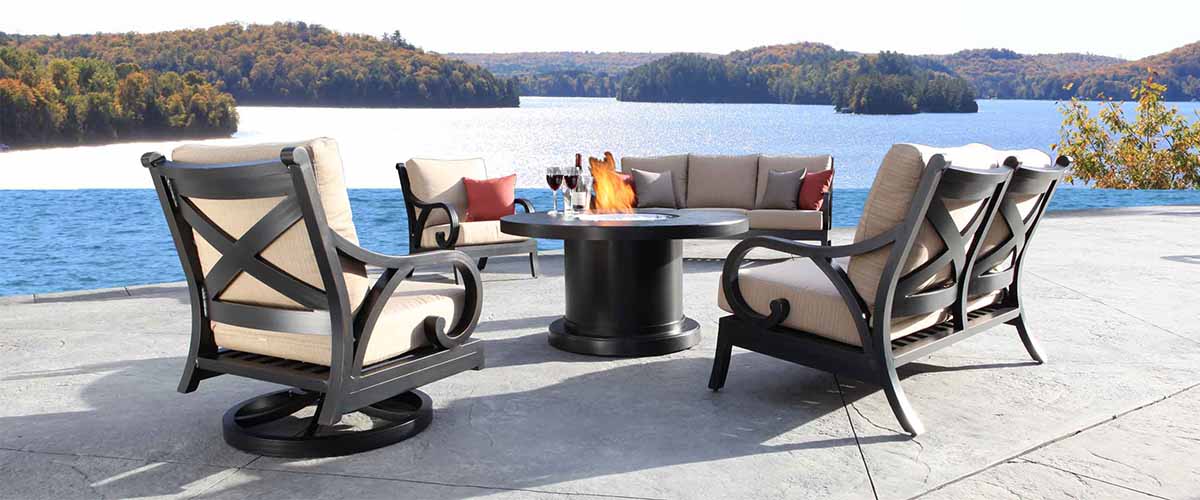
Steel
Steel is very durable and, unlike aluminum, won’t move around in hard winds. When protected appropriately it can withstand the elements well.
Steel, because of its heft, can be expensive and difficult to move around in a space. It requires a protective coating of some sort to prevent it from rusting.
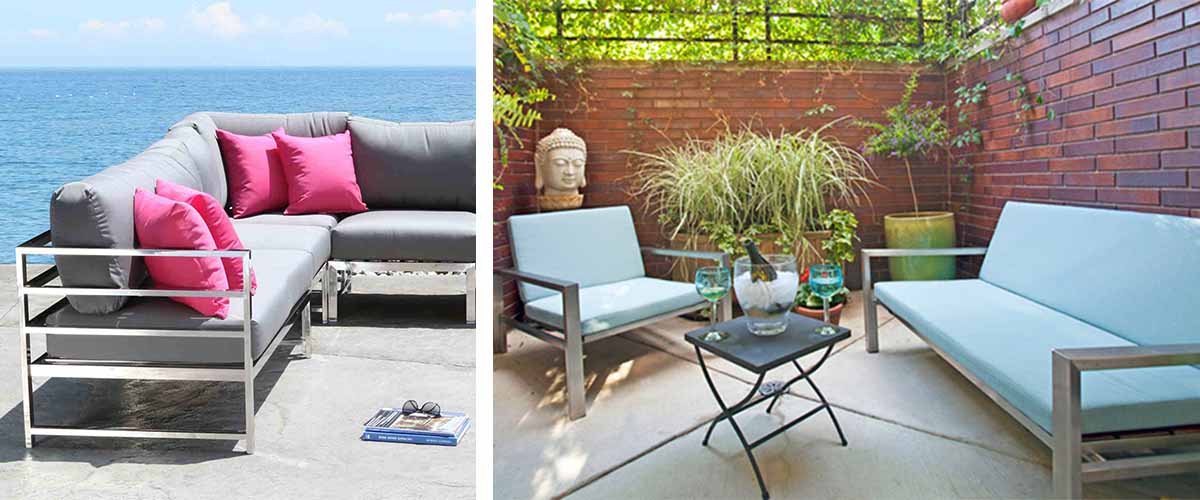
Wicker
Wicker can come in both woven wood or synthetic versions (synthetic wickers holds up well in the elements, wood may need to have some type of sealant). It is both lightweight, making it easy to move around your outdoor living spaces and durable. Cleaning wicker is easy with a hose and mild soap.
Wicker outdoor furniture sets tend to be pricey and can often be too bulky for a lot of smaller spaces.
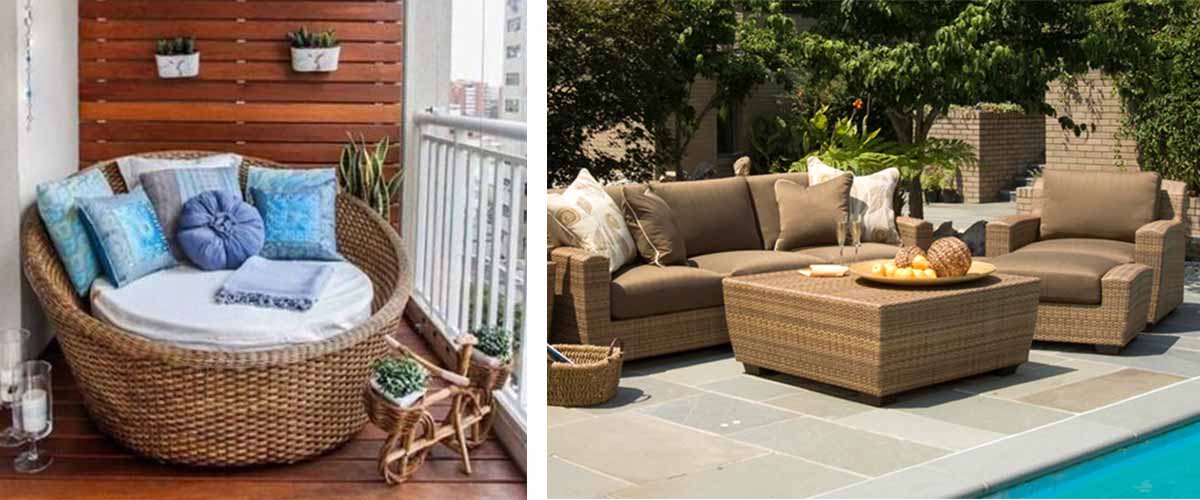
Wood
Wood furniture is classic. It’s sturdy and doesn’t hold heat as much as aluminum furniture does. Cedar and Teak are two of the harder woods that are great for the outdoors. They see little effect from rain and actually have enzymes that protect against decay.
Wood furniture can be expensive and softer woods can absorb moisture and rot over time. Paint or sealant is needed to keep water out.
